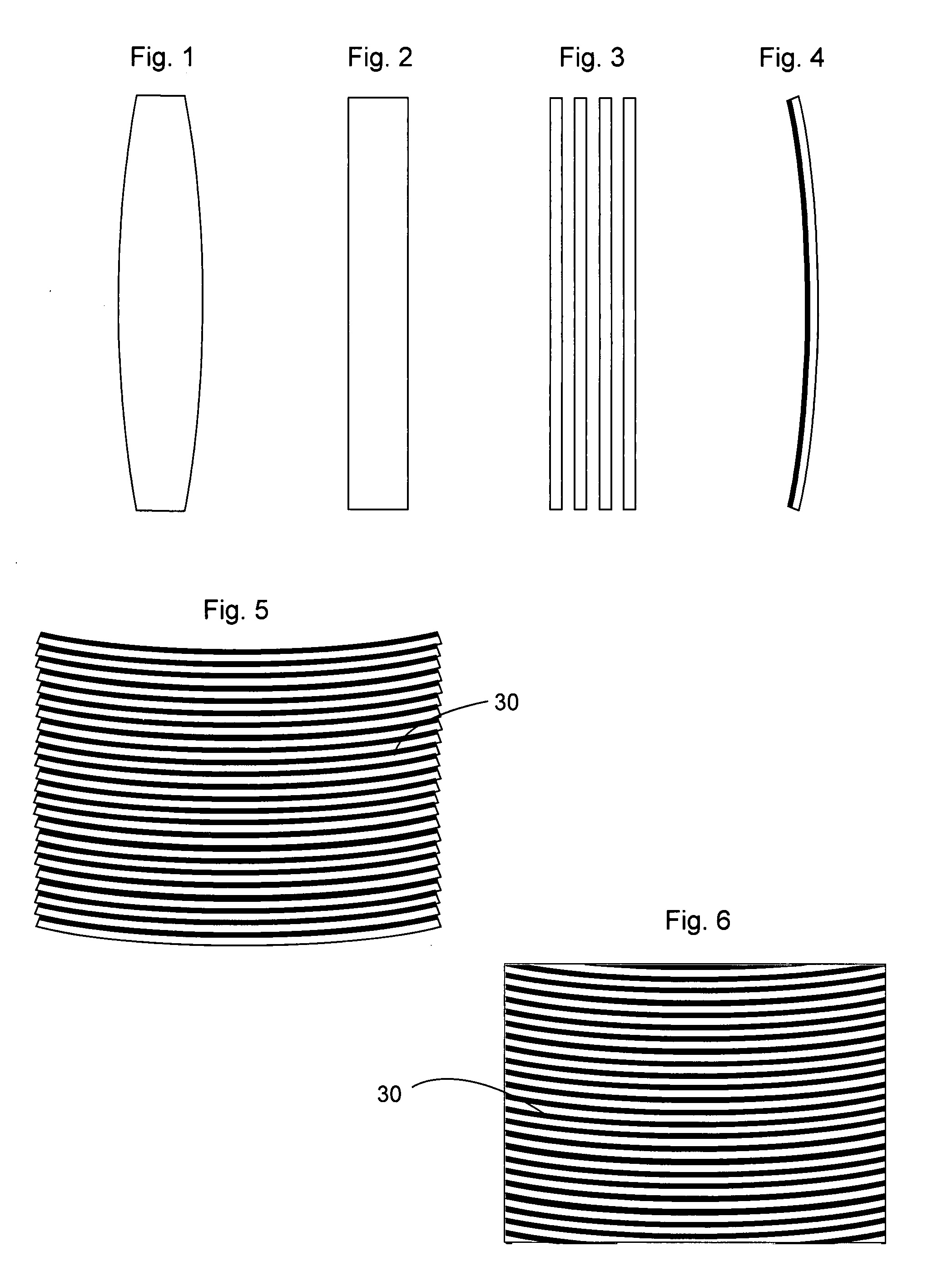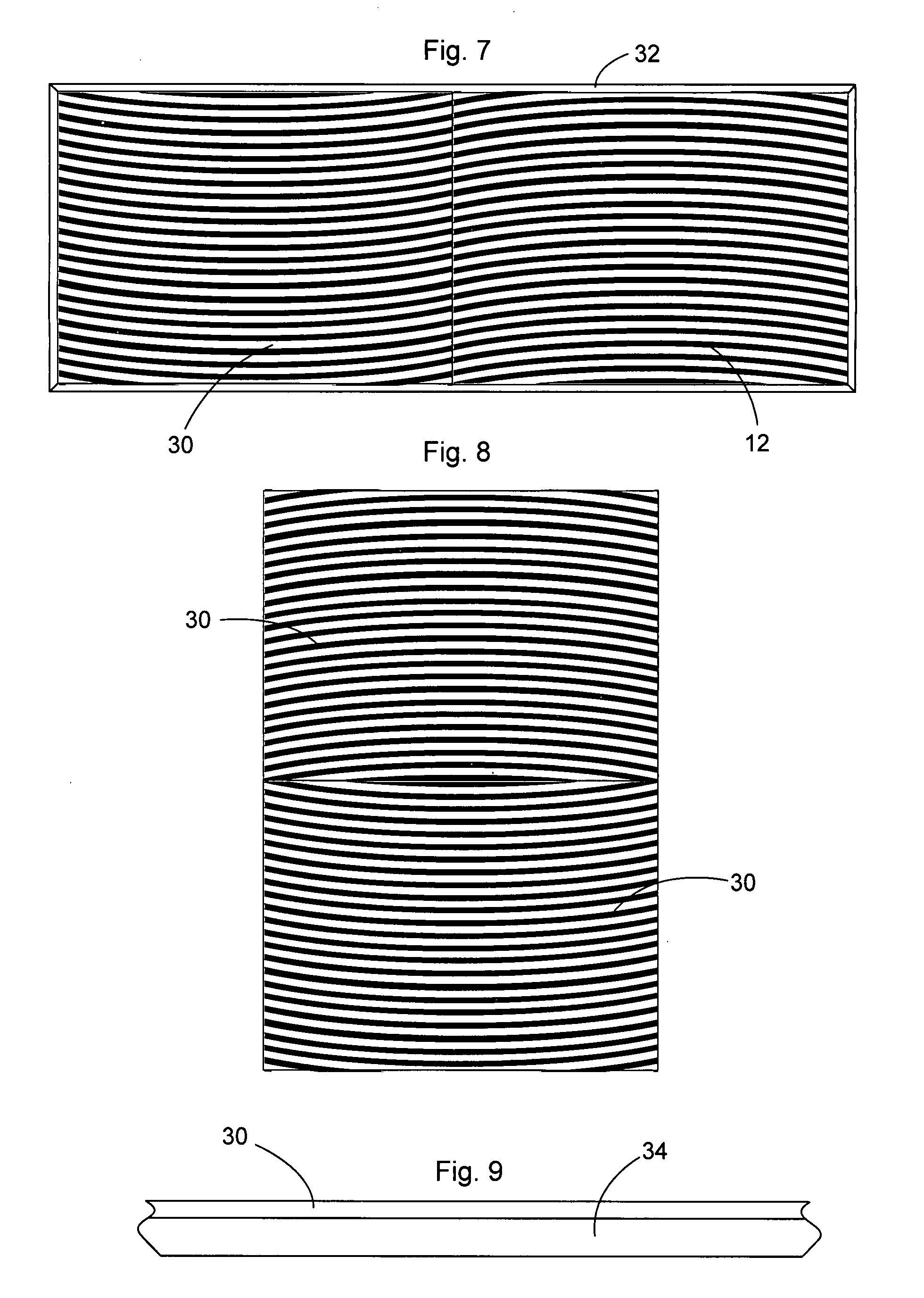Laminated furniture component and method
a technology of laminated furniture and components, applied in the direction of grading, solid separation, thin material processing, etc., can solve the problems of difficult and expensive manufacturing of single wood pieces, and achieve the effect of improving durability and enhancing the decorative appearan
- Summary
- Abstract
- Description
- Claims
- Application Information
AI Technical Summary
Benefits of technology
Problems solved by technology
Method used
Image
Examples
Embodiment Construction
[0026]In the following description, terms such as horizontal, upright, vertical, above, below, beneath, and the like, are used solely for the purpose of clarity in illustrating the invention, and should not be taken as words of limitation. The drawings are for the purpose of illustrating the invention and are not intended to be to scale.
[0027]As illustrated in the drawings, barrel staves 10 are first trimmed along their edges parallel to the longitudinal axis of stave 10, resulting in a trimmed stave 12 having straight and parallel side edges. Trimmed stave 12 is then cut into a plurality of strips 14 having equal thicknesses, with the strips being cut parallel to the sides of trimmed stave 12.
[0028]As shown in FIG. 4, each strip 14 has an outer convex side 16 and an inner concave side 18. Penetration of beverage components into concave side 18 during aging of wine or other alcoholic beverages in the barrel from which stave 10 is acquired results in an inner segment 20 that is diffe...
PUM
| Property | Measurement | Unit |
|---|---|---|
| width | aaaaa | aaaaa |
| width | aaaaa | aaaaa |
| length | aaaaa | aaaaa |
Abstract
Description
Claims
Application Information
 Login to View More
Login to View More - R&D
- Intellectual Property
- Life Sciences
- Materials
- Tech Scout
- Unparalleled Data Quality
- Higher Quality Content
- 60% Fewer Hallucinations
Browse by: Latest US Patents, China's latest patents, Technical Efficacy Thesaurus, Application Domain, Technology Topic, Popular Technical Reports.
© 2025 PatSnap. All rights reserved.Legal|Privacy policy|Modern Slavery Act Transparency Statement|Sitemap|About US| Contact US: help@patsnap.com



